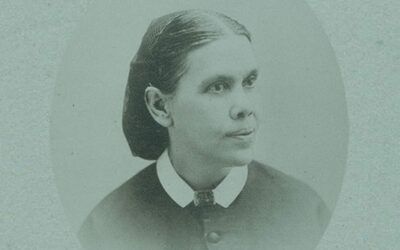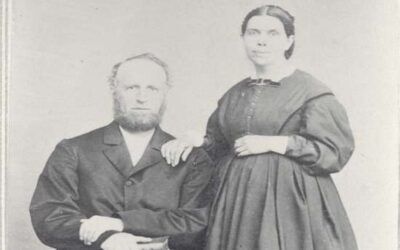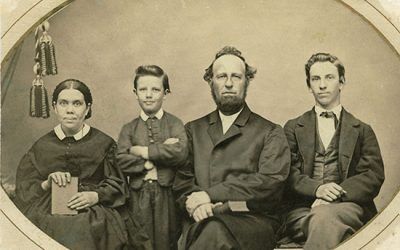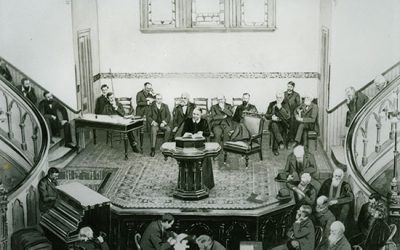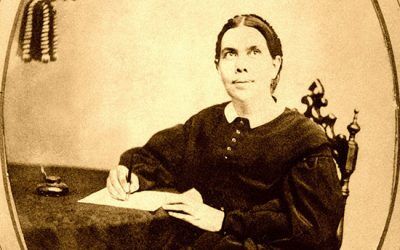Medical care in the mid-1800s was primitive, to say the least. Basic concepts we take for granted—such as proper handwashing or recognizing the dangers of bloodletting—were nonexistent. And doctors often had little more than nine months of training!
But Seventh-day Adventists would help raise the standard in healthcare.
God inspired Ellen G. White (1827–1915), one of Adventism’s founders, with a health message that was far ahead of its time—personal hygiene, a healthy diet, the lifestyle-disease connection, and more. She urged the Church to begin its own health clinics, called sanitariums, to put these teachings into practice.
Adventist health institutions today carry the legacy that Ellen White left behind. Let’s get a glimpse of that through the answers to these questions:
Why does the Adventist Church have health care institutions?

Battle Creek Sanitarium, Battle Creek, Michigan
The Seventh-day Adventist Church owes the start of its health centers to Ellen White. During her ministry, the Holy Spirit impressed her with messages about healthful living and the need for Christians to be involved in medical ministry. After her husband, James White, had a stroke and spent time in a health center in New York, she realized the Adventist Church needed its own health centers, too. These places would have a revolutionary approach for their time: combining lifestyle adjustments with biblical principles while offering high-quality care.
That was in 1865. By the following year, the Church began the Western Health Reform Institute in Battle Creek, Michigan. Looking back, Ellen White wrote:
“The Lord years ago gave me special light in regard to the establishment of a health institution where the sick could be treated on altogether different lines from those followed in any other institution in the world. It was to be founded and conducted upon Bible principles…and it was to be in His hands one of the most effective agencies for giving light to the world. It was God’s purpose that it should stand forth with scientific ability, with moral and spiritual power, and as a faithful sentinel of reform in all its bearings.”1
These clinics had a greater purpose than humanitarianism. They were to show that God wants human beings to experience good physical health just as much as spiritual health. And they were to share the hope and healing found in Christ.
What health care institutions did Ellen White help start?
Ellen White helped start at least five health centers for the Adventist Church during her lifetime. These include:
- Battle Creek Sanitarium
- St. Helena Sanitarium
- Avondale Health Retreat
- Paradise Valley Sanitarium
- Loma Linda Sanitarium
She gave specific counsel on what these sanitariums should be like:
- They should be small and home-like.
- They should use natural remedies—such as hydrotherapy, diet, and exercise.
- They should educate their patients on the laws of health, a vegetarian diet, and cooking.
- Spiritual talks and free books should be available for the patients to learn about God and the Bible.
- They should offer training for people to become medical missionaries.
This counsel spurred the development of many health centers. But we’ll look at the five Ellen White was directly involved with.
Battle Creek Sanitarium2
God impressed Ellen White that “our people should have an institution of their own, under their own control, for the benefit of the diseased and suffering among us.”3 As a result, the Western Health Reform Institute was born in 1866—the first of many more to follow.
It started with one patient. But after a month, it had reached its capacity of 12.
John Harvey Kellogg, a young man who Ellen and James White sponsored through medical school, became the superintendent of the sanitarium in 1876. Under his leadership, its name became the Battle Creek Medical and Surgical Sanitarium (Battle Creek Sanitarium, or the “San” for short).
As the first Adventist health center, it was the galvanizing force for many more to come.
St. Helena Sanitarium4
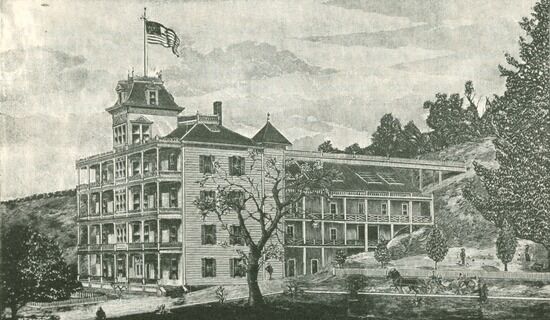
St. Helena Sanitarium, St. Helena, California
In the 1870s, Ellen White urged Adventists to start a sanitarium on the west coast. Her counsel inspired W. A. Pratt to help buy a 10.5-acre property in St. Helena, California, for a sanitarium.
The St. Helena Sanitarium opened in 1878 with Merritt G. Kellogg, half-brother of John Harvey Kellogg, as its first superintendent.
Ellen White lived near this sanitarium in her home at Elmshaven. Its staff cared for her right before she died in 1915.
Today, the institution remains as the St. Helena Hospital—the oldest Adventist hospital in the world.
Avondale Health Retreat5
The Avondale Health Retreat began in 1899 at Ellen White’s prompting. Why the urgency? There was no Adventist health center in that part of Australia (New South Wales), and the nearest hospital was miles away.6 She wanted Adventists to help the community.
Ellen White played a major role in fundraising and sat on the committee that selected the site—a pleasant country location. The location made it different from a typical hospital, as it was to be a “resting place for the overworked…and the sick.”7
For a time, the center also served as a nursing school before the program moved to Sydney Sanitarium in 1903.
The retreat continued for a while, but eventually, its buildings were used for Avondale College and then demolished in 1935.
Paradise Valley Sanitarium8
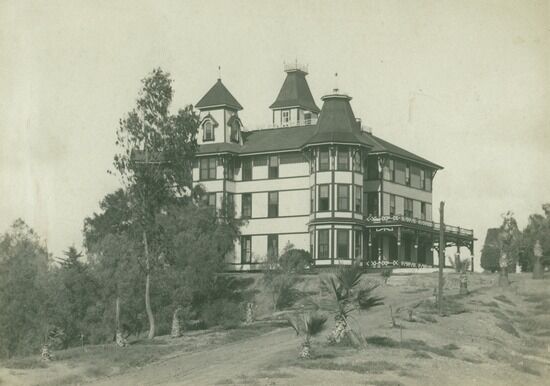
Paradise Valley Sanitarium, Paradise Valley, California
In 1905, a Doctor Whitelock discovered a country plot in Paradise, California. He told Ellen White about it. Would it make a good location for a health center?
She thought so! She and a woman named Josephine Gotzian decided to buy the property for that purpose.
But obstacle number one: a drought. Where would they get water? A well would have to be dug.
As the well-digger went deeper and deeper, he didn’t find water. But Ellen White assured him that God had led them to this property. He would provide.
And He did—below 80 feet!
The sanitarium remained privately owned until, in 1912, the Southern California Conference of Adventists took ownership.
In 1962, the Sanitarium became the Paradise Valley Hospital, which continued until it was sold in 2007 and closed in 2008.
Loma Linda Sanitarium9
In 1905, God showed Ellen White a property for a sanitarium in southern California.
When she first visited the Loma Linda Sanitarium property, she noted:
“Willie, I have been here before.”
“No, Mother. You have never been here,” he told her.
“Then this is the very place the Lord has shown me, for it is all familiar.”10
She pressed the Southern California Conference of Adventists to purchase the 76-acre property.11 Its fresh air and country environment was ideal for patients to be outdoors and tend gardens.
Both a health center and nursing school were opened on the property. It later expanded to include the College of Medical Evangelists for training physicians.
Today, it operates as Loma Linda University and Medical Center. And today there are many other Adventist institutions like this.
What legacy did Ellen White leave for Adventist healthcare today?
Ellen White left behind a unique philosophy of health reform for Adventists to share with the world. Today, the Adventist health care system carries on this legacy of whole health—treating people as individuals with physical, mental, and spiritual needs. Through its healthcare ethics and practices, its staff aims to live out the healing ministry of Jesus.
The Adventist Church operates 198 hospitals worldwide, plus clinics. Ellen White’s legacy also encouraged Adventists to start private lifestyle centers and do medical missionary work in support of the Church’s mission.
These places are about more than providing basic medical care. Some of these lifestyle centers offer training programs so Adventists can become medical missionaries themselves and serve in their communities or in foreign mission locations.
Here’s a quick overview of Adventist hospitals, clinics, lifestyle centers, and training programs throughout the world.
Loma Linda University Medical Center
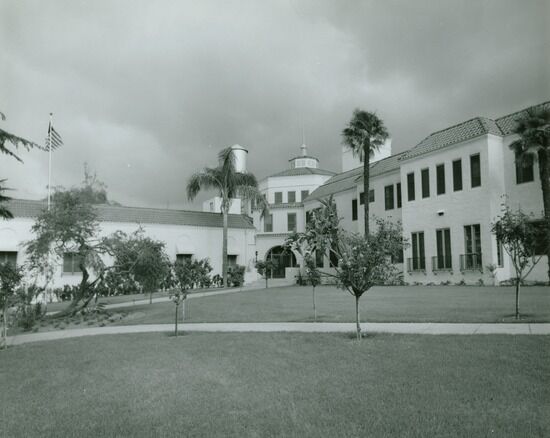
Loma Linda University Medical Center, Loma Linda, California
Founded in 1905, Loma Linda University Medical Center is a renowned research center, university, and healthcare system. It has six hospitals, plus clinics, that employ 16,000 workers.
Adventist HealthCare
Adventist HealthCare is a system of five hospitals in Maryland’s Montgomery County. It grew from Washington Sanitarium in Takoma Park, Maryland, which was started back in 1907.
Adventist Health
Adventist Health is a network of 18 hospitals across the west coast and Hawaii. Based out of Roseville, California, it began in 1965 and has been acquiring hospitals since then.
One of its most well-known hospitals is the White Memorial Hospital in Los Angeles. It opened in 1913 as a clinic for medical students from the College of Medical Evangelists (present-day Loma Linda University) to work in.
Kettering Health
Kettering Health is a network of 13 hospitals in southwestern Ohio. Adventists started it in 1964 with the support of Eugene and Victoria Kettering.
Eugene’s father, Charles Kettering, was an inventor. In memory of him, Eugene and Victoria wanted to found a hospital with state-of-the-art technology. Though the Ketterings were not Seventh-day Adventists, they resonated with the Adventist philosophy of whole health and asked the Church to start and manage the hospital.12
AdventHealth
AdventHealth is a hospital network based out of Altamonte Springs, Florida. Begun in 1973, it spans 45 hospitals in nine different states.
AdventHealth is known for its CREATION Life program, which promotes Adventist health principles.
Hospitals and clinics worldwide
As a worldwide movement, the Adventist health system extends beyond the United States. Adventist hospitals, clinics, and medical missionaries can be found on every continent (except perhaps Antarctica).
Adventist Health International and Loma Linda have partnered together with Adventist hospitals throughout Africa, Asia, and South and Central America. To see a full list of the hospitals worldwide, visit the Adventist Directory.
Adventist Mission also helps send doctors and nurses to work in smaller clinics and hospitals in more rural regions of the world. Other mission organizations, such as Adventist Frontier Missions, do the same. Whether a doctor in a hospital in Chad or a nurse at front-porch clinics in the jungles of the Philippines, each volunteer shines the love of Jesus through meeting the physical and spiritual needs of their patients.
Lifestyle centers

Photo by Anupam Mahapatra on Unsplash
Besides hospitals, Adventists have opened private lifestyle centers throughout the world. These centers support the mission of the Adventist Church and provide places for people to learn natural healing methods and simple lifestyle principles.
Rather than being massive institutions, they reflect the home-like sanitariums that Ellen White counseled Adventists to start.
Many of them also have short-term training programs to equip people as medical missionaries.
Here are just a few:
- NEWSTART Lifestyle Center in Weimar, California
- Wildwood Lifestyle Center in Wildwood, Georgia
- Hartland Lifestyle Center in Rapidan, Virginia
- Black Hills Health and Education Center in Hermosa, South Dakota
- Aenon Health Care in Malaysia
- Riverview Wellness Center in Zambia
- Country Life in Austria
God’s principles are the foundation of Adventist healthcare
The Adventist health system began with Ellen White’s counsel to exemplify the healing ministry of Jesus.
That aim has not changed. The global Adventist Church continues to follow His example in meeting the needs of individuals and teaching them a healthy way of life.
And all that happened because God inspired the Church to be on the cutting edge of medical care.
To learn more about the Adventist philosophy of health and well-being, check out the eight health principles we promote.
- White, Ellen, Counsels on Health (Pacific Press, Mountain View, CA, 1923) p. 204. [↵]
- Gomide, Jonathan, “Battle Creek Sanitarium,” Encyclopedia of Seventh-day Adventists, Feb. 27, 2022. [↵]
- White, Ellen, Testimonies for the Church, vol. 1 (Pacific Press, Mountain View, CA 1948), p. 492. [↵]
- “St. Helena Sanitarium and Hospital,” Fortin and Moon, The Ellen G. White Encyclopedia. [↵]
- Skryzpaszek, John, “Avondale Health Retreat, Australia (1899–1935),” Encyclopedia of Seventh-day Adventists. Jan. 29, 2020. [↵]
- White, A. L., Ellen G. White: The Australian Years: 1891–1900, vol. 4, (Review and Herald, Hagerstown, MD, 1983), p. 438. [↵]
- See reference 6. [↵]
- “Paradise Valley Sanitarium,” Fortin and Moon, The Ellen G. White Encyclopedia. [↵]
- “Timeline of Our History,” Loma Linda University. [↵]
- White, A. L., Ellen G. White: The Later Elmshaven Years: 1905–1915, vol. 6, (Review and Herald, Hagerstown, MD, 1982), p. 18. [↵]
- Ibid., p. 20. [↵]
- Our Story | Kettering Health; Kettering Health | Seventh-day Adventist Church. [↵]
Related Articles
More Answers
Your Comprehensive List of Ellen G. White’s Visions
Ellen White—an author, health-reform advocate, Bible scholar, and one of the most influential founding figures of the Seventh-day Adventist Church—was blessed by the Holy Spirit with the spiritual gift of prophecy (1 Corinthians 14; Romans 12:6-8). During her lifetime, she received direct guidance and inspiration from God in several different ways.
Ellen G. White’s Lasting Legacy
Ellen G. White is a well-known name among Seventh-day Adventists, but she also made an impact in many other parts of history, aside from being a co-founder of the Adventist Church.
Ellen G. White’s Challenging Health Journey
When it comes to lifelong struggles with health, Ellen White is no stranger. In fact, health challenges set the tone for her life early on—years before she was involved in co-founding the Seventh-day Adventist Church.
“What Was Ellen and James White’s Marriage Like?”
Ellen and James White, cofounders of the Seventh-day Adventist Church, met and married under somewhat unusual circumstances. But it’s a sweet story of partners in ministry becoming partners in life. And their married life continued to center on furthering the spread of the gospel together.
What is the Ellen G. White Estate?
What is the Ellen G. White Estate?Ellen G. White’s contributions to the formation and growth of the Seventh-day Adventist Church are an integral part of its history. As a significant co-founder of the denomination, her writings provided millions of people with...
How Can I Know Ellen White’s Messages Were From God?
It’s natural to be a bit skeptical when you hear about someone being “divinely inspired,” or that something is a “message from God,” etc. And we expect nothing different if you’re hearing about Ellen White, an influential co-founder of the Seventh-day Adventist Church, for the first time. After all, the Bible tells us that we’re supposed to test these things!
Ellen G. White’s Time in Australia
Ellen White traveled to Australia in the later part of her life, and she ended up spending nine years there. In that time, she helped the Australian Seventh-day Adventist Church increase in size and strength.
Ellen G. White’s Time in Europe
When the Seventh-day Adventist Church was still young, a council of the church in Europe requested Ellen White, one of Adventism’s key leaders, to come to Europe.
Ellen G. White’s Travels and Worldwide Mission
Though Ellen White, a co-founder of the Seventh-day Adventist Church, is best known for her ministry in the United States, she also traveled to twelve other countries in her lifetime—a big accomplishment in the 19th century when travel was strenuous and long.
Ellen G. White’s Counsel on College Education
Ellen G. (Harmon) White, a significant co-founder of Adventism, is often known for her practical and spiritual guidance for proper childhood education. But she was also significantly involved in the development of Seventh-day Adventist higher education.
8 Pieces of Advice from Ellen White’s Counsel for Families
In this article, we’ll look at the insight Ellen White received from God. We’ll cover 8 major themes she highlighted for families.
Was Everything Ellen White Said Divinely Inspired?
The Seventh-day Adventist Church believes that many of Ellen White’s messages were inspired by God. But that doesn’t mean everything she ever said was prophetic, or meant to be taken as direct instruction from God. So let’s break down how to identify the nature of her many written messages and quotes.
Who Were Ellen White’s Children?
Being the children of a woman with a prophetic calling from God had its blessings and its challenges.
In this overview, we’ll look at the highlights of the lives of Ellen White’s sons during her many years of ministry, as well as the ways each of them decided to serve Jesus Christ:
Ellen White’s Spiritual Counsel on Marriage
As one of the founders of the Seventh-day Adventist Church, Ellen G. White was held in high regard. She was a prolific author and was heavily engaged in the mission of the denomination, prayerfully pursuing the guidance of the Holy Spirit.
Ellen G. White or the Bible—Which is More Important to Adventists?
Ellen G. White or the Bible—Which is More Important to Adventists?The Bible—without a shadow of a doubt—is the most important book. It’s the standard we use to test all other writings, including those of Ellen White. The Seventh-day Adventist Church believes that “the...
Are Any of Ellen G. White’s Prophecies Yet to Come True?
Ellen White, a co-founder of the Seventh-day Adventist Church, demonstrated many times over that she had the spiritual gift of prophecy. Some of her predictions’ timelines have already passed, and those prophecies have been fulfilled. Others have yet to be fulfilled.
What Was Ellen G. White’s Counsel on Music?
Ellen G. White, one of the founders of the Seventh-day Adventist Church, also provided helpful guidance regarding music choices for Christians. She provided sound principles to answer questions the young Adventist Church had.
What Ellen White Said About Using the Bible in Education
Ellen White, one of the founders of the Seventh-day Adventist Church, believed that education was not complete unless it was founded upon the principles of the Bible.
But what does the Bible have to do with math or science? Is it important to integrate the Bible with schoolwork?
What Were Ellen White’s Visions About the Adventist Church?
What Were Ellen White’s Visions About the Adventist Church?Led by the Holy Spirit, Ellen G. White was given many messages, counsel, revelations, and visions about the Bible, history, prophecy, and how we can apply biblical principles to our daily lives. She was also a...
Was Ellen G. White Really a Prophet?
If you look at what Scripture provides as tests for a true prophet, Ellen White meets all the criteria.
What is the Spirit of Prophecy (Books 1–4) by Ellen G. White?
Applying biblical prophecy to history, recent events, and especially the future, can be a daunting task. Even a little scary for some. But even so, we can’t help but want to know more. We want to be prepared—to feel like we know how to weather the storm.
Ellen G. White’s Counsel on Christian Education
Ellen White, a co-founder of the Seventh-day Adventist Church, saw that the U.S. educational system during her time was lacking. And as part of her life of ministry, she sought out practical ways to be better stewards of our minds, bodies, and the lives we’re given.
What Does Ellen White Say About Prayer?
Have you ever had a burden you just had to tell someone, but you were afraid of being judged if you did? Ellen G. White, an important figure in the Seventh-day Adventist Church and a prolific writer, described prayer as talking to God in a personal way—He’s the friend we can tell everything to.
Were All Ellen White’s Visions About the Future?
While the visions God gave Ellen White were often about the distant future or last-day events, she had many others that addressed different topics. They may not be discussed as much as her visions about the Second Coming or the End Times, but they tackled some timely topics for her day.
What Did Ellen White Say About End-Time Prophecy?
We can read in Scripture about the series of events and signs that lead up to the second coming of Jesus Christ. And it sounds pretty intense, to say the least. The symbolic nature of the language of prophecy also can make things tricky to understand at first.
Were All Ellen White’s Books Inspired?
As the most translated female author in the world, Ellen White wrote numerous books, articles, pamphlets, and more. These writings focused on developing Christian character, emphasizing Bible truth, practical tips for living well and staying healthy, and discussing effective methods of delivering the gospel message to the world.
How Ellen White Influenced the Adventist Health Message
Seventh-day Adventists are known for their emphasis on healthy living. And Ellen G. White was a significant influence in the development of this priority and practice among Adventists.
What Did Ellen White Teach About Vegetarianism?
One thing you might have heard about Seventh-day Adventists is their emphasis on a vegetarian lifestyle. If you’re wondering why that is, it goes back to our church’s humble beginnings:
Steps to Christ: A Guide to a Relationship with Jesus
Whether you’re just starting your journey with Jesus Christ, are coming back after some time away, or have had a relationship with Jesus for years, using a book—in addition to the Bible—to guide or supplement that relationship can be helpful, comforting, and joyful.





